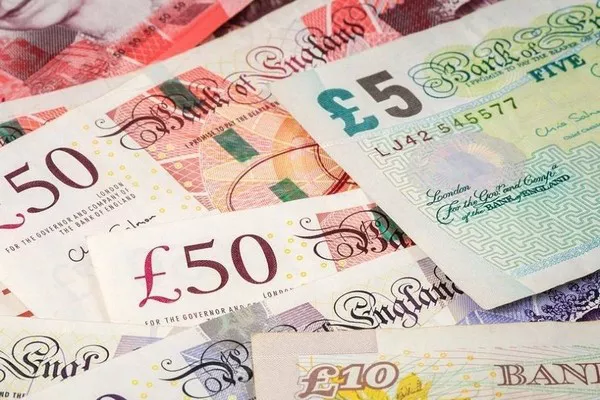In the realm of numismatics, the allure of gold coins has always been undeniable. As a symbol of wealth, stability, and a store of value, gold coins have played a pivotal role in the economic history of nations. In the United Kingdom, a rich tapestry of gold coins exists, each with its unique design, historical significance, and intrinsic value. This article delves into the world of gold coins in the UK, exploring their history, notable designs, and current market dynamics.
Historical Perspective
Gold coins have a storied history in the United Kingdom, dating back centuries. The British Gold Sovereign, one of the most iconic gold coins, has its roots in the early 19th century. First minted in 1817 during the reign of George III, the Sovereign became a symbol of the British Empire’s economic might. With a nominal value of one pound sterling, its actual gold content made it far more valuable, attracting collectors and investors alike.
The Victoria era saw the introduction of the Young Head, Jubilee Head, and Old Head variations of the Gold Sovereign. The intricate designs reflected the artistic sensibilities of the time, while the coins themselves became cherished artifacts, embodying the prosperity of the British Empire.
Notable Gold Coins
Gold Sovereigns: The Gold Sovereign remains a stalwart in the realm of British gold coins. Featuring the iconic St. George and the Dragon design on the reverse, this coin has seen various iterations throughout its long history. Modern Gold Sovereigns, minted by the Royal Mint, continue to be sought after by collectors and investors for their historical significance and gold content.
Gold Britannia: Introduced in 1987, the Gold Britannia is another flagship coin in the UK’s gold repertoire. Depicting the iconic figure of Britannia, a symbol of British strength and resilience, these coins come in various denominations and sizes. The Gold Britannia program has become a cornerstone of the Royal Mint’s bullion offerings, combining artistic excellence with investment-grade purity.
Queen’s Beasts Series: In 2016, the Royal Mint embarked on the Queen’s Beasts series, a collection of gold and silver coins featuring ten heraldic statues that stood guard at Queen Elizabeth II’s coronation. Each coin in the series showcases a different beast, from the Lion of England to the Griffin of Edward III. The series not only celebrates the monarch’s history but also offers a unique and visually stunning investment option for collectors.
Commemorative Gold Coins: Over the years, the UK has released numerous commemorative gold coins, marking significant events such as royal weddings, anniversaries, and historical milestones. These coins often feature bespoke designs and limited mintages, adding an extra layer of exclusivity for collectors.
Market Dynamics
The market for UK gold coins is multifaceted, catering to both numismatists and investors. The value of these coins is influenced by factors such as rarity, condition, and historical significance. For collectors, the appeal lies in the artistic merit and the historical narrative encapsulated within each coin. On the other hand, investors are drawn to the intrinsic value of gold, using these coins as a tangible and historically rich form of wealth preservation.
Numismatic Value vs. Intrinsic Value
Understanding the balance between numismatic value and intrinsic value is crucial for those interested in UK gold coins. Numismatic value refers to the worth of a coin based on its rarity, historical significance, and condition. Collectors often pay a premium for coins with unique features or a limited mintage. Intrinsic value, on the other hand, is derived from the metal content of the coin, primarily gold in this case. As the price of gold fluctuates on the global market, the intrinsic value of gold coins becomes a pivotal factor in determining their overall worth.
Tips for Collectors and Investors
For collectors and investors venturing into the world of UK gold coins, several tips can enhance their experience and financial prudence:
Research and Education: Knowledge is key. Before making any purchases, thoroughly research the specific coins of interest, their historical context, and market trends. Understanding the nuances of numismatics and the gold market will empower collectors and investors to make informed decisions.
Condition Matters: The condition of a coin significantly affects its value. Coins in mint or near-mint condition generally command higher prices in the market. Ensure proper storage and handling to preserve the integrity of the coins.
Authentication and Certification: When acquiring gold coins, particularly from the secondary market, it is crucial to verify their authenticity. Reputable grading services, such as the Numismatic Guaranty Corporation (NGC) or the Professional Coin Grading Service (PCGS), can provide certification, giving buyers confidence in the coin’s authenticity and condition.
Diversification: Like any investment, diversification is key to mitigating risks. Consider a well-balanced portfolio that includes a mix of different coins, denominations, and series to enhance the overall stability of the collection or investment.
See Also What Happens if the GBP Collapses?
Conclusion
The world of UK gold coins is a captivating blend of history, artistry, and financial prudence. From the timeless allure of the Gold Sovereign to the contemporary brilliance of the Queen’s Beasts series, these coins offer a tangible connection to the UK’s rich cultural heritage. Whether approached as a collector’s passion or an investor’s hedge against economic uncertainties, UK gold coins continue to shine as enduring symbols of wealth and legacy. As numismatists and investors alike explore this fascinating realm, the intrinsic value of gold coins, coupled with their historical narratives, ensures their enduring appeal for generations to come.


